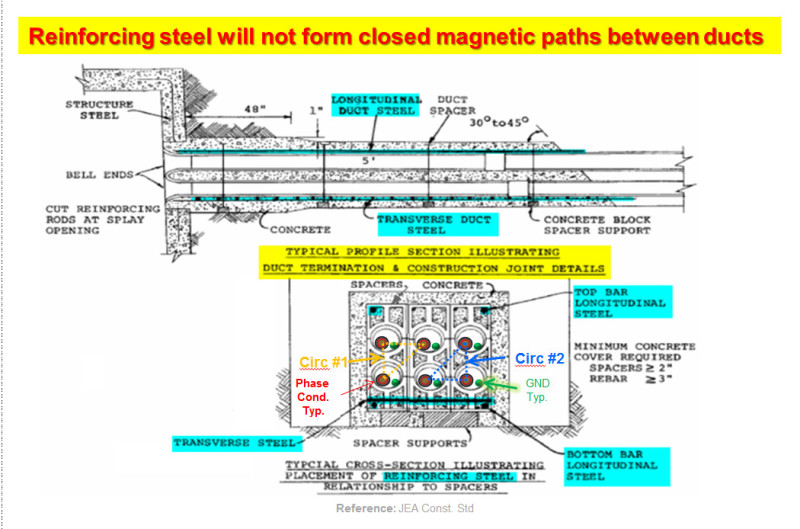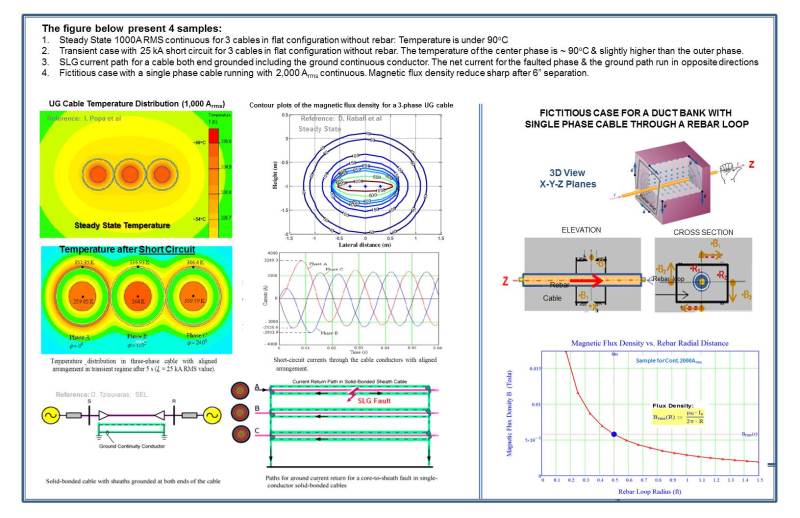Hi All,
I'm having an issue with high voltage underground cable installation in a current project. The cable is 275kV single core AWA 1Cx1000mm2, 2 runs per phase with total lenghth up to 2.04km. The cable is laid in trefoil formation up to the concrete duct bank where cables are laid in flat formation in the PVC pipe sleeves (6nos) 1 pipe/single core cable. There will be a PEC cable installed inside each pipe sleeve for the single core cables.
The trefoil formation is 2km (cross bonding done at 3 intervals along this length)and flat formation inside the duct bank is 15m. The concrete duct bank also has rebars. I would like to know whether there will be any circulating currents in the rebars due to the magnetic field and eddy current caused by the phase conductor in the PVC pipes.If yes is there any method to calculate this current?
Also since the PEC cable is laid in parallel together with the single core cable in inside the PVC pipe, there will be some circulating currents to flow in the PEC cable as well (PEC is earthed at both end)due to the same reason as mentioned above. How to eliminate/reduce the circulating current which will flow in the PEC cable?
The basic concern is too much heat inside the busduct due to the induced circulating currents.
Please share your experience and provide suggestion to mitigate the problem.
Thank you.
I'm having an issue with high voltage underground cable installation in a current project. The cable is 275kV single core AWA 1Cx1000mm2, 2 runs per phase with total lenghth up to 2.04km. The cable is laid in trefoil formation up to the concrete duct bank where cables are laid in flat formation in the PVC pipe sleeves (6nos) 1 pipe/single core cable. There will be a PEC cable installed inside each pipe sleeve for the single core cables.
The trefoil formation is 2km (cross bonding done at 3 intervals along this length)and flat formation inside the duct bank is 15m. The concrete duct bank also has rebars. I would like to know whether there will be any circulating currents in the rebars due to the magnetic field and eddy current caused by the phase conductor in the PVC pipes.If yes is there any method to calculate this current?
Also since the PEC cable is laid in parallel together with the single core cable in inside the PVC pipe, there will be some circulating currents to flow in the PEC cable as well (PEC is earthed at both end)due to the same reason as mentioned above. How to eliminate/reduce the circulating current which will flow in the PEC cable?
The basic concern is too much heat inside the busduct due to the induced circulating currents.
Please share your experience and provide suggestion to mitigate the problem.
Thank you.


